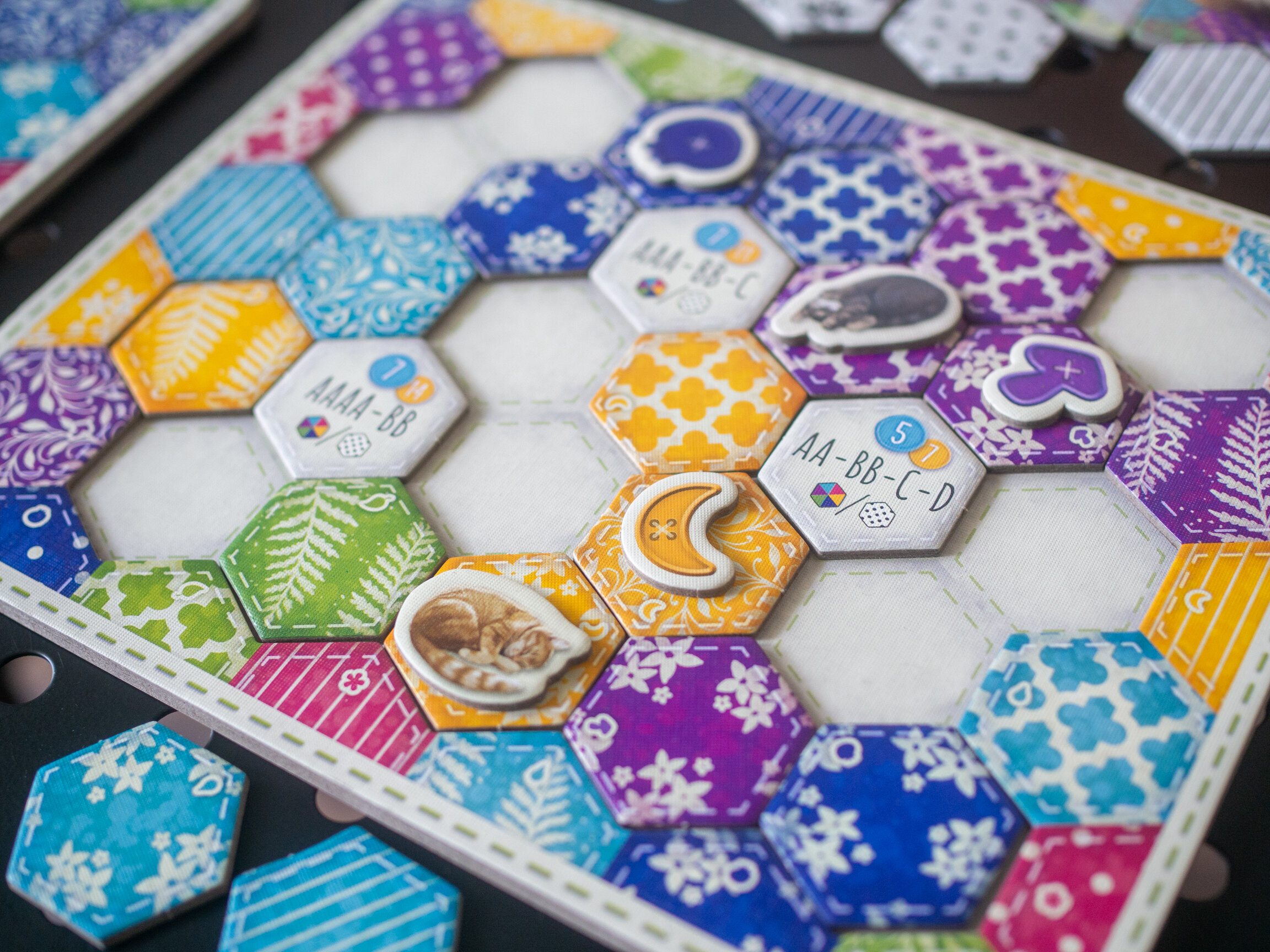Calico
Puzzle games have had a recent resurgence with the popularity of games like Patchwork and Azul. It seems that every year a new challenger enters the fray upping the cute and cozy levels to a new degree. Calico is the latest among the genre that looks to combine deep-thinking with a layer of zen.
The star of the show in Calico is definitely the art and aesthetic. Right from the cover of the box, you can already get a strong sense of theme. The palette is oozing in soft pastels and bright colours. Every component has character and are built to last. The player boards are walled along the outside to keep tiles locked in place. In the world of puzzle games, Calico stands firmly above them all when it comes to style and design.
In Calico, players are competing quilters looking to create the coziest, most beautiful quilt. To start, players randomly select four design goal tiles and choose which three to place on their quilt. The Cat Scoring tiles are randomly determined along with their matching patterns. Three patches are placed in the middle of the table, and two patches are distributed to each player. During a player’s turn they lay down one of the two tiles in their hand onto their quilt, and pick up a replacement from the three available in the middle. The middle is replenished to always have three patches available.
There are multiple ways of scoring points in Calico. Anytime a player connects three patches of the same colour, they receive a button worth three points. If a player is able to collect all six buttons, they receive a bonus rainbow button also worth three points. If a player is able to match the pattern requirements of a cat scoring tile, they receive a cat worth additional points. Finally, if a player is able to complete their design goal tiles in colour or pattern they receive the listed amount of points, and additional points for completing both colour and pattern. The game concludes when every players’ quilt has been completely filled. The player with the most points is declared the winner.
For a game that looks relaxing and peaceful, Calico is a real thinker of a game. Anyone familiar with “analysis-paralysis” knows that sometimes games can kind of come to a half when players try to map out their decisions. Calico may look like a simple game, but the thought process is very open-ended. Attempting to maximize your moves kind of leads to a very solitary experience. There’s a lack of player interaction, and the table becomes quiet as players try to think about their best moves. Calico is best played with a less competitive state-of-mind.
Puzzles are often a quiet experience, but most enjoyable board games are the ones with a healthy level of table talk. It’s a bit of a rigid dichotomy. Calico shines best with players who are less likely to overthink their turns. I would actually recommend the game for beginner-level players and suggest to avoid it for advanced players. Players at beginner to intermediate levels tend to just make moves and let the chips fall as they do. And Calico shines brightest with a real sense of zen.




